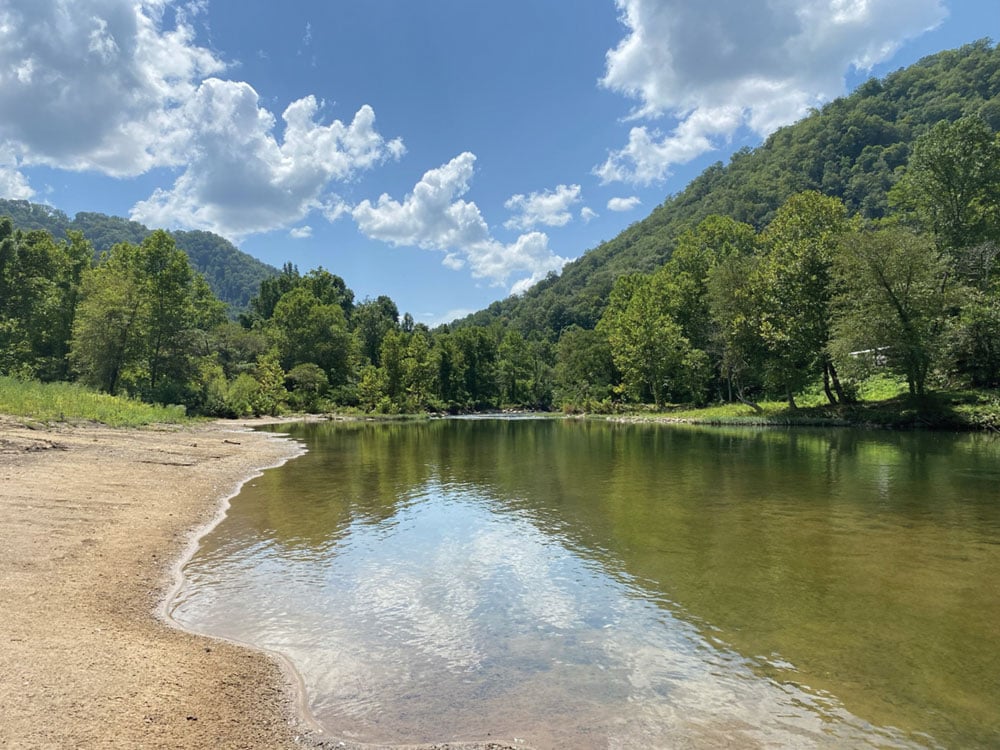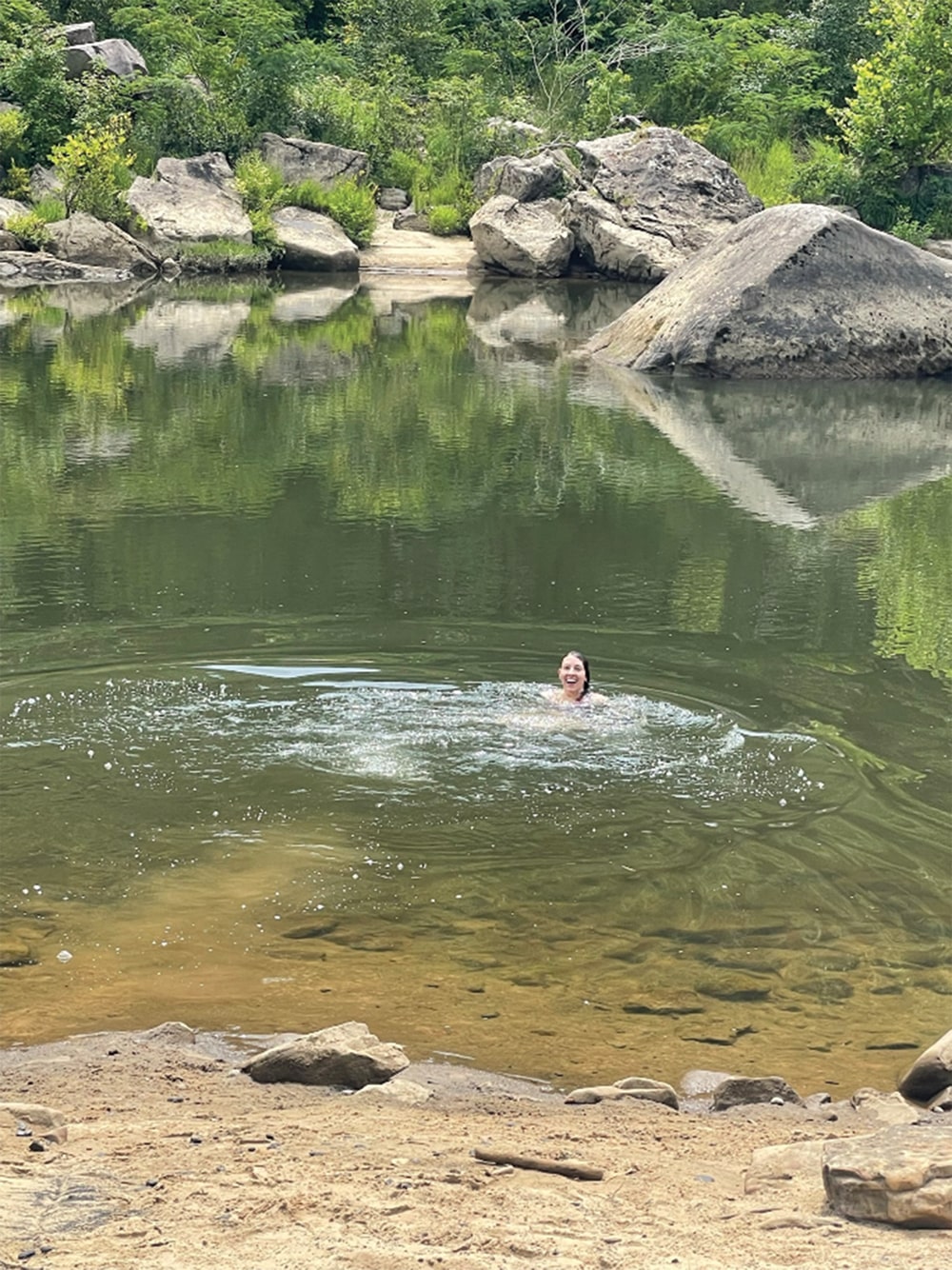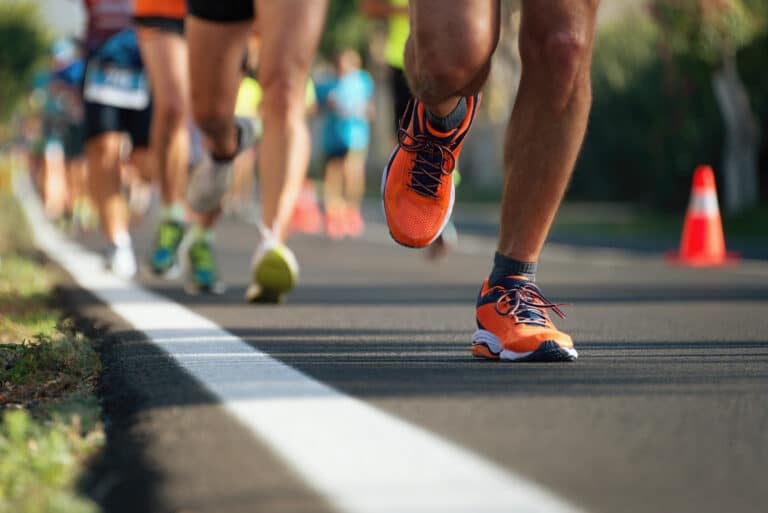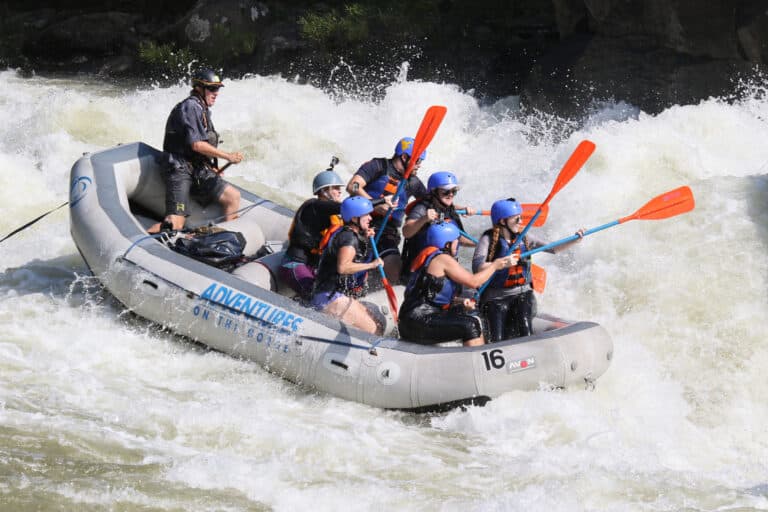Take the River Swimming Challenge in 2022.
Each summer, Tierra Curry and her friends have a fun competition to see who can swim in the most rivers. This year, Tierra went all in to win. She swam in 108 rivers across the Southeast and Mid-Atlantic. From her home near the Cumberland River in Kentucky, she traveled from Pennsylvania to Georgia, west to the Mississippi River and east to the Shenandoah River, to swim in every river she could reach.
Curry didn’t wear a wetsuit—just a swimsuit and sandals. She was hoping to see a diversity of aquatic life. Instead, what she found was a lot of mud, pollution, and plastic.
“Wild, beautiful rivers are still out there, but they are few and far between,” Curry wrote in a Washington Post op-ed in September. “Most of the rivers I swam in were varying degrees of disgusting.”
Curry’s river swimming challenge also revealed the realities of our changing climate. Some rivers were bone-dry; others were swollen from so much rainfall that they washed out roads.

Next year is the perfect time to take the plunge. 2022 is the 50th anniversary of the Clean Water Act. As Curry discovered about our rivers, we have a lot to celebrate, and even more work to do.
What were the highlights of her river swimming challenge? Curry shared some of her most memorable moments from the 108 Southeastern rivers she visited.
What was the most beautiful river?
I’m in love with the Cranberry River in West Virginia. Summer or winter, it’s a beautiful place to sit on huge rocks under hemlock trees and rhododendrons and stare into the water. Early in the spring there are frog eggs, phoebes, juncos—it’s a naturalist’s wonderland.
What was the most polluted river?
Singling out the most polluted river is a matter of pick your poison. The Obion was surrounded by endless fields of corn and soy that are doused in pesticides and fertilizers and run right up to the river’s edge with no forested buffers. In the Mississippi in western Kentucky I waded in through an oil sheen. When I swam in the Shenandoah there was an active no swim advisory due to E. coli and algae. I felt good about the rivers that were surprisingly clear until a Debbie Downer scientist pointed out that some rivers are clear because they are so toxic nothing can survive.
What was the craziest object you observed in the river?
I was actually happy to find a baby doll head in the Guyandotte River because malacologists are prone to flaunting their doll-parts loot in particular. At the Freshwater Mollusk Conservation Society meeting, they auction off this grotesque sculpture of scavenged baby dolls that the highest bidder gets to house for the year. I also found a My Little Pony in the Cumberland, and most of a cow skeleton.
What were the biggest and smallest rivers you swam in?
I got in the Mississippi at the western edge of Kentucky, but the river there was narrower than the Ohio at the waterfront in Paducah where it meets the Tennessee.
I had to lay down in a puddle in the Lost River in West Virginia when it was living up to its name in a summer dry spell.
Your favorite river?
The Big South Fork National River and Recreation Area is my favorite river ever. It’s the only place where the critically endangered littlewing pearly mussel survives and is also home to the endemic Big South Fork crayfish and dozens of other special species. The wildflowers are off the charts and the rock formations are magnificent.
Most endangered river?
The Rockcastle River in Kentucky still supports a pretty good assemblage of endangered mussels, but unmanaged off-road vehicle traffic on Forest Service land is dumping sediment into the river, which jeopardizes the survival of the endangered animals. Wading into the mainstem of the river you sink into goo the silt load is so high. It’s tragic because it doesn’t have to be this way if people would stay on trails and the agency would enforce the boundaries.
Coldest river?
Dam-released water can be brutally cold and the Savage River in Maryland is no exception. But the naturally coldest river was the Little Pigeon in the Smokies. People on the trail were in disbelief that I jumped in.
What were the first and last rivers you swam in?
I started the season the week of summer solstice in the Green River in western Kentucky. It’s home to an amazing diversity of freshwater mussels. I had always read that empty mussel shells provide homes for other species, and sure enough I picked up an old shell and there was a tiny crawdad living inside. It feels so deeply good to explore the handful of places where endangered species are surviving and recovering as opposed to the larger landscape where most rivers have just been wrecked.
I ended the season in the Little River in Great Smoky Mountains National Park, a clear, stunningly cold beautiful stream.
What species depend on these rivers?
Humans depend on the rivers for drinking water, fishing, and recreation. Driving around swimming in rivers and then getting to come home and shower and drink reliably clean water is an experience of privilege. Some communities have polluted water and can’t just drive away, and the wildlife that depend on the rivers for their very survival can’t just up and move. Coal mining ruined my family’s well water when I was in high school, and we couldn’t use it for drinking or even laundry.
The Southeast is a world hotspot for freshwater biodiversity including fish, salamanders, crayfish, mussels, river snails, turtles, and aquatic insects. Our beautiful rivers and the amazing diversity of wildlife they support should be a source of pride and we should safeguard them.
What was the most dangerous or difficult moment during your river swim challenge?
Knowingly submerging myself in polluted waters aside, I took some chances that weren’t the smartest decisions during the record floods in Tennessee when I should’ve just stayed out of the rushing water. I dedicated each summer weekend to heading out in a different direction from my home near the Cumberland River, and my weekend to drive across Tennessee coincided with the flooding. The rivers were overtopping roads and bridges and I couldn’t see under the water at all and I kept having to turn around and reroute because the roads were flooded. I got the points, but I didn’t get to experience the wildlife at all.
How can we improve health of our rivers?
Everything flows downhill and ends up in a river. Individuals can choose not to use pesticides and can choose healthier versions of personal care and cleaning products. Dietary choices like choosing organic produce and plant-based proteins lessen the pollution burden. Towns can create greener parking lots and streets with vegetated stormwater buffers. Agencies can increase enforcement to keep off-road vehicle traffic on designated trails away from waterways. States can improve water quality standards, protect headwater streams, and limit development approvals that would degrade water quality. We can stop building new dams, remove old dams, and better manage all dams to prevent the spread of invasive species and ensure adequate flows for wildlife.
I was bowled over by how much litter people leave on riverbanks. An old school Give a Hoot Don’t Pollute campaign would be helpful. At the macro level, we need to fight for policies to end human-caused extinction and to protect a livable climate.
What was the most inspiring moment from your summer of swims?
Growing up in southeastern Kentucky, surface coal mining was rampant, and creeks could run orange, blue, black, nothing was surprising. Returning to explore the area this summer after decades away, I was pleasantly surprised by how clear some of the rivers are now. I’m so stoked about the lovely Russell Fork River Blue Water Trail on the Kentucky-Virginia border. I swam at an incredible public access beach in downtown Elkhorn City that rivals any swimming hole anywhere.
Cover Photo: Curry in the Big South Fork, one of the 108 rivers she visited in 2021.







